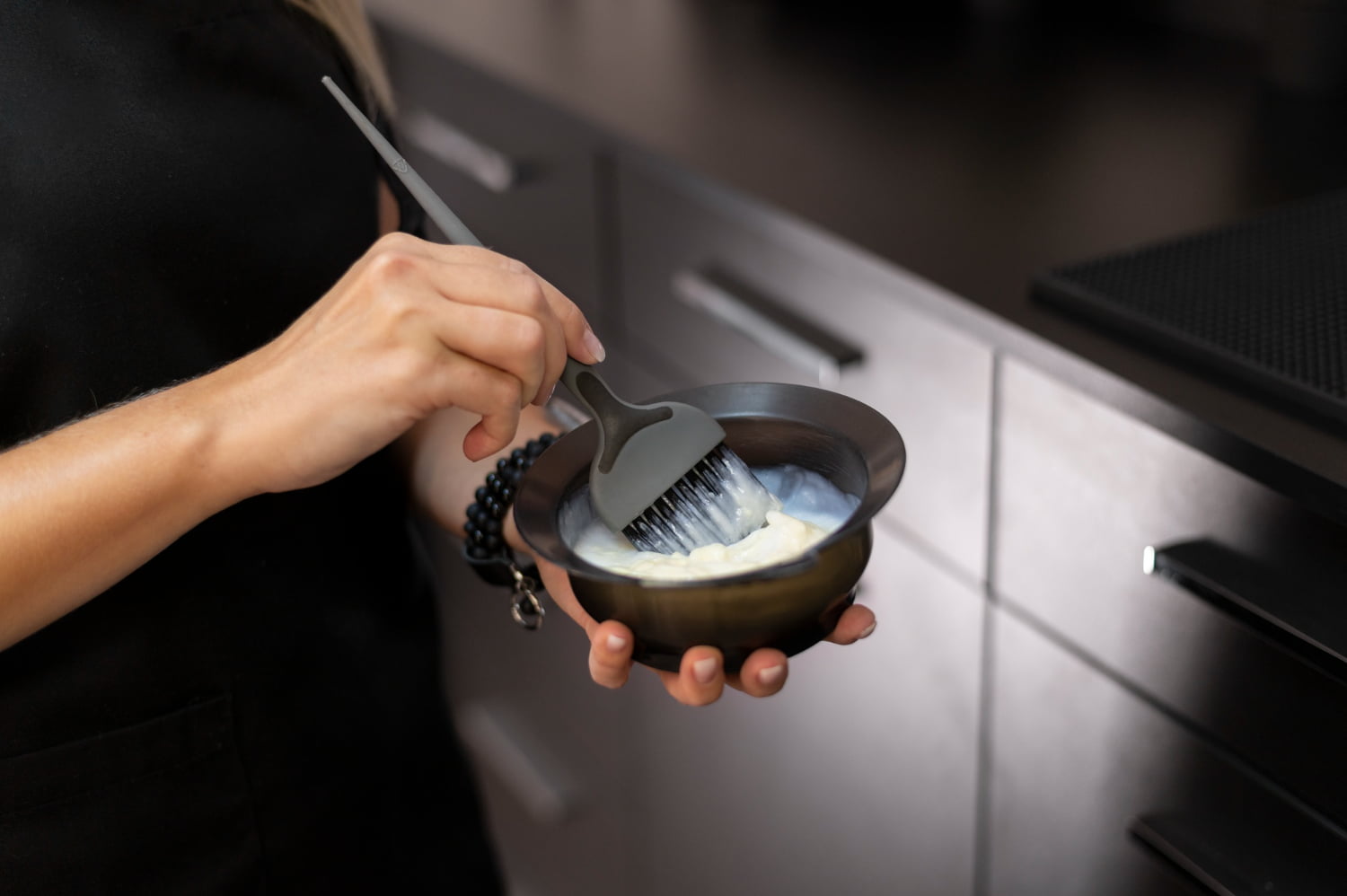How to get hair dye out of clothes? Hair dye mishaps are not uncommon, and the panic that ensues when your favorite shirt or cherished garment gets stained can be overwhelming. But fear not! In this comprehensive guide, we’ll delve into the nitty-gritty of removing hair dye from clothes. From the initial steps to dealing with stubborn stains and long-term preventive measures, we’ve got you covered.
Introduction
Brief Overview of the Common Problem
Hair dye stains can happen to the best of us, whether you’re a seasoned DIY colorist or a first-timer. The vibrant hues of hair dye often translate into stubborn stains on clothes, leaving individuals seeking effective solutions.
Importance of Quick Action
How to get hair dye out of clothes: The key to successful stain removal lies in acting promptly. The longer the dye sits on the fabric, the more challenging it becomes to eliminate.
Types of Fabrics and Their Reactions
Delicate Fabrics
Silk
Silk, known for its luxurious feel, demands extra care. Blotting gently with a clean cloth is crucial to prevent damage.
Wool
Wool, being more robust than silk, requires a different approach. Immediate attention and proper handling are essential for stain removal.
Sturdy Fabrics
Cotton
Cotton fabrics generally respond well to DIY stain removal methods. However, specific precautions should be taken to avoid setting the dye.
Polyester
Polyester fabrics may require specialized attention to prevent discoloration. The choice of stain removal method is crucial.
Immediate Steps for Removal – How to Get Hair Dye Out of Clothes
Blotting the Stain
The first step is to blot the stained area gently. Use a clean cloth or paper towel to absorb excess dye without spreading it further.
Rinsing with Cold Water
Immediately rinsing the stained area with cold water is crucial. Hot water can set the dye, making it more challenging to remove.
Avoiding Hot Water
Temperature matters. Hot water can make the stain more stubborn and difficult to eliminate. Stick to cold water for better results.
Home Remedies
Using Dish Soap and Hydrogen Peroxide
Create a mixture of dish soap and hydrogen peroxide. Apply it to the stained area and let it sit for a few minutes before rinsing.
Baking Soda and Vinegar Solution
How to get hair dye out of clothes: A paste of baking soda and vinegar can work wonders. Apply the mixture, gently rub, and rinse. This method is effective for various fabric types.
Lemon Juice for Natural Fabrics
Lemon juice, a natural alternative, is suitable for fabrics like cotton and linen. Apply and let it sit before rinsing with cold water.
Commercial Stain Removers
Introduction to Available Products
Various commercial stain removers are designed specifically for hair dye stains. Explore the options and choose a product compatible with your fabric.
Choosing the Right One for Specific Fabrics
Different fabrics may require different stain removers. Read labels carefully and select a product that suits your specific needs.
Tips to Prevent Stains
Wearing Old Clothes During the Dyeing Process
How to get hair dye out of clothes: Prevention is better than cure. Wear old and expendable clothing during the hair dyeing process to minimize the risk of staining valuable garments.
Using Protective Barriers
Aprons, towels, or any protective barrier can shield your clothes from accidental dye splatters. Take proactive measures to avoid stains.
Dealing with Set-In Stains
Identifying Set-In Stains
Knowing when a stain has set in is crucial. Understand the characteristics of set-in stains to choose the right removal method.
Specialized Techniques for Removal
Stubborn, set-in hair dye stains may require specialized techniques. Patience and persistence are key when dealing with such stains.
Seeking Professional Help
When DIY Methods Fail
If your attempts prove futile, don’t hesitate to seek professional assistance. Sometimes, a professional touch is needed for effective stain removal.
Consulting with a Dry Cleaner
Dry cleaners have specialized tools and expertise for handling tough stains. Consult with them for a tailored solution.
Common Mistakes to Avoid
Using Hot Water
Hot water can set the dye, making it more challenging to remove. Stick to cold water for better results.
Rubbing the Stain Vigorously
Vigorous rubbing can damage the fabric and spread the dye. Gently blot and pat to avoid worsening the situation.
Long-Term Solutions
Choosing Color-Fast Clothing
Opt for color-fast clothing to reduce the likelihood of dye bleeding onto fabrics. Check clothing labels for color-fastness before purchasing.
Opting for Professional Dyeing Services
For a foolproof solution, consider professional hair dyeing services. They ensure precise application, minimizing the risk of stains.
The Importance of Timely Action
Preventing Permanent Stains
Acting promptly prevents the dye from setting in permanently. Quick action increases the chances of successful stain removal.
Increasing the Success Rate of Removal
Timely action enhances the success rate of removing hair dye stains. Don’t procrastinate when it comes to stain removal.
Success Stories
Real-Life Experiences of Successful Stain Removal
Hearing success stories from others can inspire confidence. Share experiences and encourage others in their stain removal journey.
Encouraging Readers with Positive Outcomes
Assure readers that successful stain removal is achievable with the right approach and a bit of patience.
Quick Recap
Summarizing Key Points
A quick recap reinforces essential steps for effective hair dye stain removal. Take note of the crucial actions at each stage.
Reinforcing the Importance of Acting Promptly
Emphasize once more the significance of immediate action for successful stain removal. Quick action is the key to success.
Conclusion
Emphasizing the Effectiveness of Various Methods
Highlight the versatility and efficacy of the different methods discussed. There’s a solution for every type of stain.
Encouraging Readers to Share Their Experiences
Invite readers to share their own successful stain removal experiences. Collective wisdom benefits everyone facing this common dilemma.
Tips and Tricks
- Act Swiftly: The key to successful stain removal is swift action. The longer the dye sits, the harder it is to remove.
- Blot, Don’t Rub: When dealing with fresh stains, gently blot the area with a clean cloth or paper towel. Avoid rubbing, as it may spread the dye.
- Cold Water Rinse: Immediately rinse the stained area with cold water. Cold water prevents the dye from setting in.
- Choose the Right Method: Different fabrics require different stain removal methods. Be sure to choose a method that suits the fabric type.
- Test in an Inconspicuous Area: Before applying any stain remover, test it in a small, inconspicuous area to ensure it won’t damage or discolor the fabric.
- Mixing Homemade Solutions: When using homemade solutions like baking soda and vinegar, create a paste for better adherence to the stain.
- Seek Professional Advice: If in doubt or if the stain persists, seek advice from professionals or your local dry cleaner.
- Preventive Measures: Wear old clothes during the dyeing process to minimize the risk of stains on valuable garments.
- Use Protective Barriers: Aprons, towels, or old sheets can act as protective barriers during the dyeing process, preventing accidental splatters.
Pros and Cons of Various Methods
Commercial Stain Removers:
Pros:
- Specifically formulated for hair dye stains.
- Convenient and easy to use.
- Effective on various fabric types.
Cons:
- Some products may contain harsh chemicals.
- May not be suitable for all fabric types.
Home Remedies:
Pros:
- Often use common household items.
- Generally safe for fabrics.
- Environmentally friendly alternatives.
Cons:
- Effectiveness may vary.
- Some remedies may require more effort.
Professional Assistance:
Pros:
- Expertise in handling tough stains.
- Specialized tools and techniques.
- Higher success rate.
Cons:
- Cost may be a factor.
- Not suitable for immediate stain removal needs.
Preventive Measures
- Wear Old Clothes: Reserve a set of old clothes specifically for the hair dyeing process to avoid staining your favorite garments.
- Protective Gear: Invest in aprons or use old towels to create protective barriers. This minimizes the risk of dye splatters.
- Work in a Controlled Environment: Choose a well-lit and controlled workspace to minimize accidental spills and splatters.
- Follow Instructions Carefully: Whether it’s a DIY dye or a commercial product, follow the instructions carefully to prevent unintended staining.
- Use Gloves: Wear protective gloves during the hair dyeing process to avoid direct contact with your clothes.
- Cover Surfaces: Cover surfaces with old sheets or newspapers to catch any potential drips or spills.
- Check Fabric Compatibility: Ensure the clothing you wear during the dyeing process is color-fast and compatible with the dye being used.
- Be Mindful of Surroundings: Avoid dyeing your hair in areas with valuable items or light-colored furnishings to prevent accidental staining.
Frequently Asked Questions
Q: Can I Use Bleach to Remove Hair Dye Stains?
A: Bleach is not recommended, as it may damage fabrics and worsen the stain. Opt for safer alternatives.
Q: How Do I Prevent Hair Dye from Staining My Clothes in the First Place?
A: Wearing old clothes and using protective barriers can significantly reduce the risk of staining during the dyeing process.
Q: Is It Possible to Remove Old and Dried-In Hair Dye Stains?
A: While challenging, it’s possible with the right techniques and persistence. Patience is key when dealing with older stains.
Q: Are There Any Specific Products Recommended for Stubborn Stains?
A: Consulting with professionals or using specialized stain removers is advised for stubborn stains. Different stains may require different solutions.
Q: What Should I Do If the Stain Doesn’t Come Out After Multiple Attempts?
A: Seeking professional help or re-evaluating the stain removal methods may be necessary. Don’t hesitate to ask for expert advice if needed.
Investigate New Chronicles: How to Get Diesel Smell Out of Clothes



